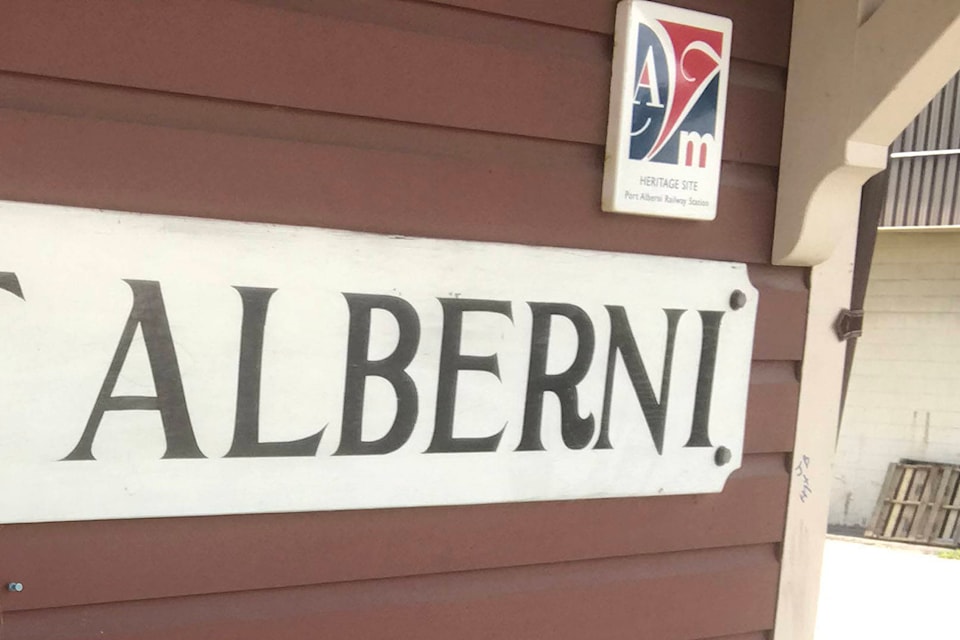“Why does Port Alberni only have one designated heritage building?”
The question was posed by a reader on our Facebook page in July after reporter Elena Rardon wrote about the City of Port Alberni looking to lease the historic train station. The train station, the city asserted, is the only city-owned piece of property within city limits that has formal heritage status.
The reader thought it was shameful that of all the heritage buildings owned by the city, only one has formal designation.
(There is actually a second site that has formal designation, McLean Mill National Historic Site. Although the city owns it, it isn’t inside city limits.)
READ: City of Port Alberni seeking someone to lease historic train station
The reader intimated that the city has been neglectful of its history; that’s not really the case. There is a difference between formal heritage designation and having a building listed on a heritage registry—there are a few more buildings on the city’s registry. There is also a difference between publicly-owned and privately-owned buildings. Members of the public cannot be compelled to have their heritage buildings added to a heritage registry.
The City of Port Alberni Community Heritage Register was created in October 2006. Eighteen pages long, it lists five buildings with historical significance in the city: the train station (which is also designated), city hall on Argyle Street, the Rollin Art Centre, the former Alberni Post Office that currently houses Pete’s Mountain Meats and the Carmoor Block—privately owned.
READ: City of Port Alberni ponders future of uptown train station
READ: Port Alberni looks to sell or lease out heritage train station
To be on the register “is not a formal designation,” says Shelley Harding, coordinator with the Alberni Valley Museum. “They’re not assigned protected status. They’re part of the community heritage and fabric of our community,” she explained.
In other words, the city-owned buildings on the register are considered to have historic significance. They are also listed as part of the Canadian Register of Historic Places.
“The designation of the train station is that it is a protected building.”
The train station was given official designation on April 9, 1990. It was originally built in 1911 with additions made in 1950. Both are considered significant reflections of the changing nature of transport and business in the community. The city bought the station in 1990, the same year a group of volunteers restored it to its original appearance.
Because it is considered protected, any changes to the station have to go through an official process, and the city must be consulted.
The community heritage register was only created in 2006, but the rationale was one of necessity, said Ken Rutherford, who was on the heritage commission at the time. “We were losing some of our heritage buildings. Because our community is so young, people don’t look at some of the original stuff as being ‘old,’” he explained.
“You can’t force a private citizen into putting their building on a register, so they looked at city-owned buildings.”
The Carmoor Block is an exception—ACRD director Penny Cote and her husband own it, and agreed to include it in the community register.
“I think it’s important for a community to recognize its roots,” Rutherford said. “It’s definitely about recognition and appreciation of the history. There’s that saying ‘you have to understand where you were so you know where you’re going.’”
If we keep tearing down everything that reminds us of our past, “then you have a modern city and there’s no recognition of where you came from.”
There are exceptions: the recently-demolished Arrowview Hotel, for example, that was beyond saving as an historic structure.
There was another historic building that once stood at the top of Third Avenue where Woodward’s, then Zellers occupied the spot (Coulson Group of Companies owns it now). The original had been damaged in an earthquake and needed to be torn down for safety reasons.
Rutherford said once the heritage commission changed, the heritage register project lost traction, and no one has really championed it since it was formed.
Such a register needs someone who is passionate about old buildings to petition people to have their buildings included—because there are definitely buildings that qualify, he added.
For instance, Yates Funeral Home is located in the former All Saints Church that was built in 1897. The house from Thomas Paterson Farm that was located on Johnston Road 100 years ago still stands.
There are significant homes, too: like the MacMillan Bloedel guest house that still stands on Third Avenue across from what is now the Paper Excellence paper mill, or even the home where former Canadian prime minister Kim Campbell was born.
“It would be nice to get some of those registered.”
An informal register of heritage home exists, where homeowners can share history of their residences, but they don’t have to adhere to strict rules about modifying their homes.
This informal register includes historic photos and written histories. It’s normally available to view at the Alberni Valley Museum, but the museum is still closed due to COVID-19 restrictions.
The City of Port Alberni’s heritage registry is available online, and there is more information for people curious about what is listed as provincially and nationally significant. It can be found on the city’s website at www.portalberni.ca/heritage-registry.
If you think you are living in a heritage home or have a commercial building that should be included in this informal register, there is a nomination form available on the website.
Susie Quinn is the Alberni Valley News editor.
